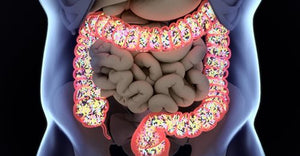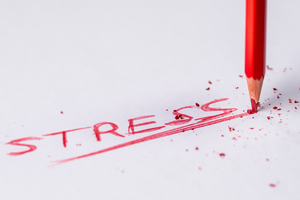Women and Bone Health – What Basics Do You Need to Know?

Women often start to pay attention to the health of their bones around the onset of menopause, when there is a relative decline in estrogen production. But what does the hormone estrogen have to do with bones? Estrogen is actually necessary in order for calcium to be absorbed into bone. When the hormone is less available in the body, it impacts the rate at which calcium becomes incorporated into the bone structure.
Bone is not inert. It is actually a living tissue made up of proteins, collagen and minerals. It is considered a “matrix,” whose elements are always in flux, responding to various nutritional and hormonal conditions within the body. Calcium, for example, is constantly either being absorbed into bones or released into the blood as needed. The objective, then, is to aim for a calcium balance, meaning that calcium should be replenished in the bones at the rate it is lost.
Studies show that the greater the density of bones before the onset of menopause, the stronger they remain thereafter. It is, therefore, never too early (or too late!) to adopt dietary and lifestyle habits that help support strength, mobility and vitality throughout all stages of life.
Some important guidelines to follow:
- Exercise – Physical activity is one of the single best ways to build and maintain strong bones. One hour of moderate exercise three times a week can not only prevent bone loss, but can help increase bone density, even after menopause.
- Avoid smoking–The toxins in cigarettes can upset the balance of hormones, such as estrogen. Nicotine and free radicals can also destroy valuable bone-making cells.
- Diet – When it comes to maintaining a calcium balance in the body, there are foods that should be avoided and foods that are particularly beneficial.
- What to avoid – There is no question that cola is detrimental to bones. Study after study has clearly shown that the high phosphate levels in cola “pull” calcium out of the bones, creating a negative calcium balance. In addition, coffee, alcohol, salt and refined sugar all can contribute to a poor calcium balance and should be consumed in moderation or, even better, avoided altogether.
- What to eat: Dairy products are good sources of calcium, but are not the only foods that contribute to healthy bones. Foods high in a variety of bone-benefitting vitamins and minerals – such as vitamins K and D, magnesium and potassium (see below) – include green leafy vegetables like kale, broccoli and spinach. Almonds, salmon, green tea, and oats are also high in these nutrients. Generally, a diet that includes several daily servings of fruits and vegetables (especially the dark, green leafy variety) is wonderful for supporting bone health.
- Vitamins and Minerals
- Calcium is critical to bone health. Approximately 99% of calcium is found in bone and is an essential component in forming its structure.
- Magnesium is involved in bone formation and also affects the concentrations of the active form of vitamin D – a major regulator of bone homeostasis.
- Zinc helps to increase bone formation and mineralization.
- Copper helps keep bones flexible and strong.
- Manganese is necessary for forming the bone matrix into which calcium and other bone minerals are deposited.
- Vitamin C is vital for maintaining the homeostasis (proper balance) necessary for healthy bone mass.
- Vitamin D helps facilitate calcium absorption in the intestine and is instrumental in bone turnover. Vitamin D deficiency is on the rise due to avoidance of sun exposure, certain medications which bind fat (anticonvulsants, steroid drugs, laxatives), and women with low hormone levels. Vitamin D status also declines with age because of a reduced dietary intake, diminished absorption from food, and because aging skin has a reduced capacity for making vitamin D.
- Vitamin K helps to increase bone deposition, reduce the amount of calcium lost and improve bone turnover profile.
My recommended supplement for bone health is FibroCal. Learn more about it here.
- David Brady







Comments 1
Penny
When you refer to potassium, you say “see below.” There isn’t any “below.” How much potassium a day do you recommend? It’s available only in 99 mg. Why not larger?